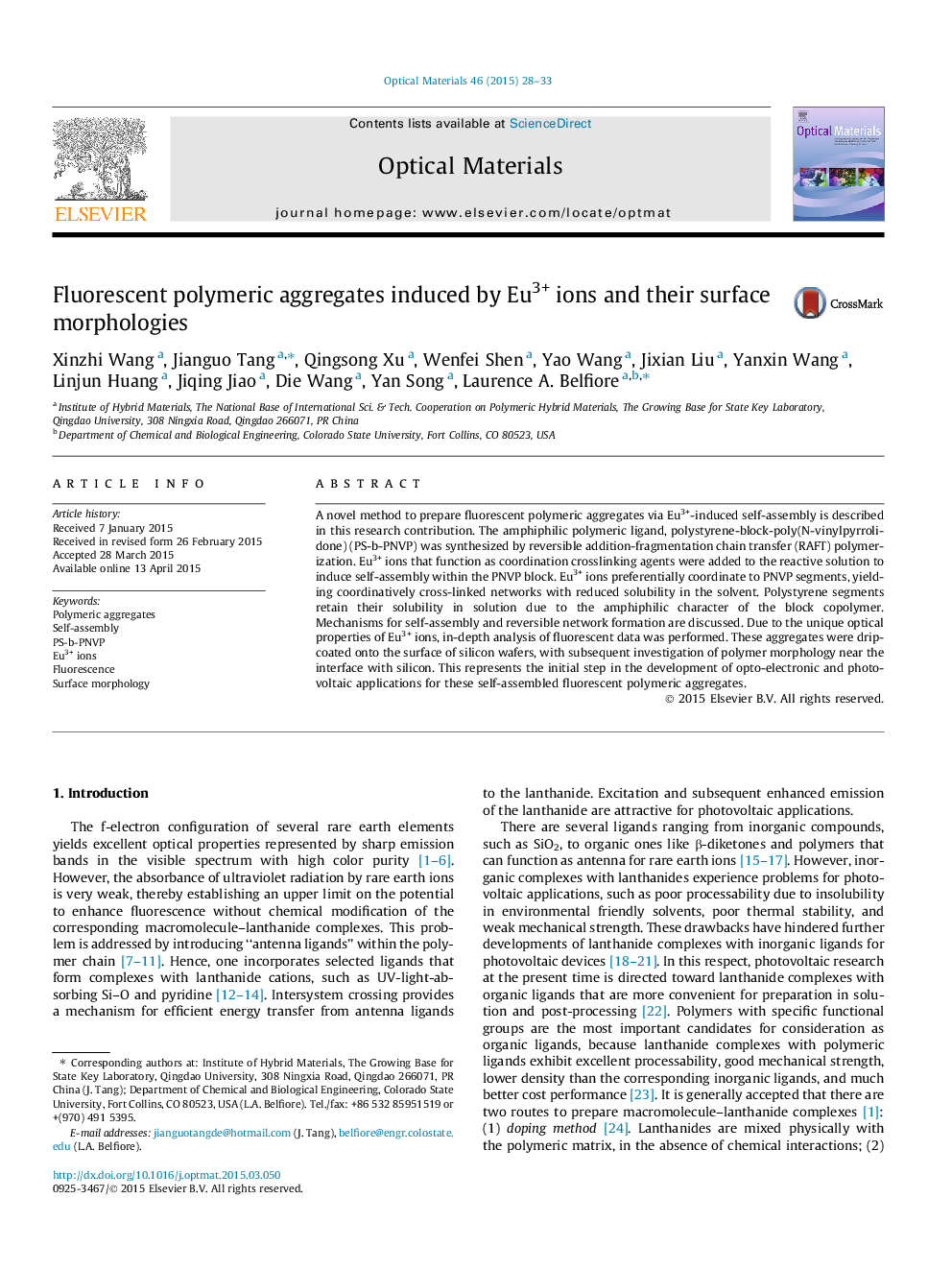| Article ID | Journal | Published Year | Pages | File Type |
|---|---|---|---|---|
| 7908849 | Optical Materials | 2015 | 6 Pages |
Abstract
A novel method to prepare fluorescent polymeric aggregates via Eu3+-induced self-assembly is described in this research contribution. The amphiphilic polymeric ligand, polystyrene-block-poly(N-vinylpyrrolidone) (PS-b-PNVP) was synthesized by reversible addition-fragmentation chain transfer (RAFT) polymerization. Eu3+ ions that function as coordination crosslinking agents were added to the reactive solution to induce self-assembly within the PNVP block. Eu3+ ions preferentially coordinate to PNVP segments, yielding coordinatively cross-linked networks with reduced solubility in the solvent. Polystyrene segments retain their solubility in solution due to the amphiphilic character of the block copolymer. Mechanisms for self-assembly and reversible network formation are discussed. Due to the unique optical properties of Eu3+ ions, in-depth analysis of fluorescent data was performed. These aggregates were drip-coated onto the surface of silicon wafers, with subsequent investigation of polymer morphology near the interface with silicon. This represents the initial step in the development of opto-electronic and photovoltaic applications for these self-assembled fluorescent polymeric aggregates.
Related Topics
Physical Sciences and Engineering
Materials Science
Ceramics and Composites
Authors
Xinzhi Wang, Jianguo Tang, Qingsong Xu, Wenfei Shen, Yao Wang, Jixian Liu, Yanxin Wang, Linjun Huang, Jiqing Jiao, Die Wang, Yan Song, Laurence A. Belfiore,
